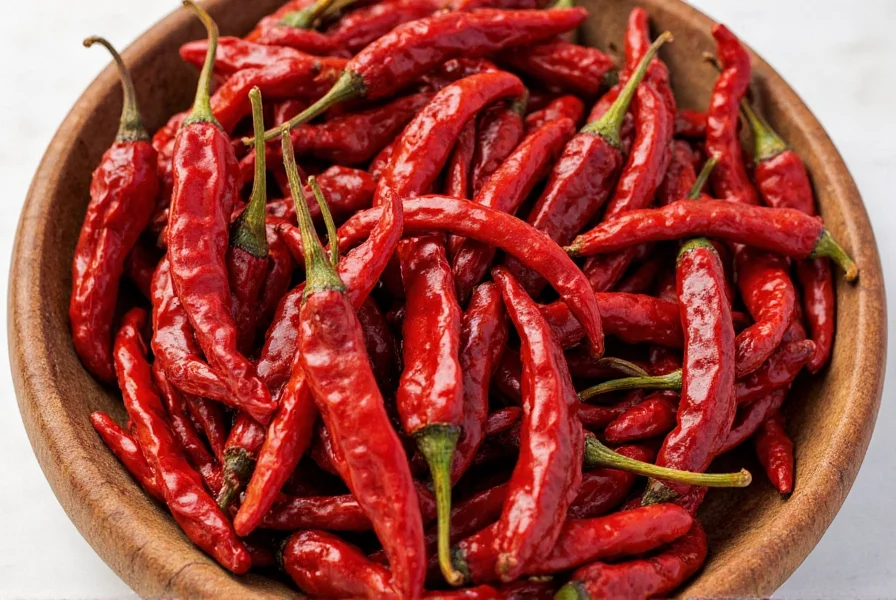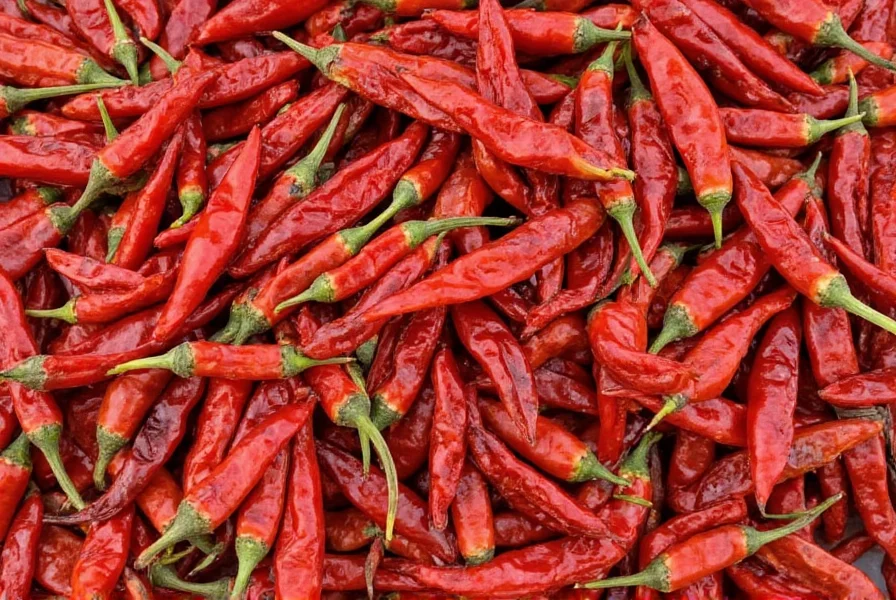Dried chilies are a versatile kitchen staple that can transform your dishes with concentrated flavor and heat. Whether you're making salsa, chili powder, or a smoky marinade, knowing how to use them properly is key. This guide covers everything you need to know—from choosing the right type to storing them correctly and incorporating them into your favorite recipes.
Table of Contents
- What Are Dried Chilies?
- Types of Dried Chilies
- Uses and Recipes
- Buying Guide for Dried Chilies
- Practical Tips for Using Dried Chilies
- Frequently Asked Questions
- Conclusion
What Are Dried Chilies?
Dried chilies are fresh chilies dehydrated to preserve flavor, color, and heat. This process intensifies their taste and makes them more concentrated than fresh counterparts. They come in diverse shapes, sizes, and heat levels, each offering unique flavor profiles that add depth and complexity to cooking.

Key benefits include extended shelf life (months without losing potency) and versatility in spice blends, sauces, and cocktails. Unlike fresh chilies, dried varieties maintain consistent heat and flavor year-round.
Types of Dried Chilies
Hundreds of varieties exist, each with distinct characteristics. Here are the most popular types:
- Chipotle: Smoked jalapeños with rich, smoky flavor and medium heat (2,500–8,000 Scoville).
- Ancho: Dried poblanos offering sweet, mild flavor (1,000–1,500 Scoville) and deep red color.
- Serrano: Hotter than jalapeños, commonly used in salsas and hot sauces (10,000–23,000 Scoville).
- Cayenne: Thin, reddish chilies ideal for powders and seasoning blends (30,000–50,000 Scoville).
- Habanero: Extremely hot with fruity, citrusy notes (100,000–350,000 Scoville).
Uses and Recipes
1. Making Chili Powder
Roast dried chilies until fragrant (2-3 minutes), remove stems and seeds, then grind into fine powder. Blend with complementary spices like cumin (1 tsp), garlic powder (1/2 tsp), and smoked paprika (1 tsp) for a custom blend. Store in an airtight container for up to 6 months.
2. Infusing Oils
Add 2-3 dried chilies (e.g., arbol or chipotle) to 1 cup of olive oil. Heat gently on low for 15 minutes, then cool. Strain and use for dressings, marinades, or drizzling over dishes. Learn more about oil infusion techniques from Epicurious.
3. Creating Salsa and Sauces
Soak 4-5 dried chilies (e.g., guajillo or ancho) in hot water for 20 minutes until soft. Blend with 1 cup tomatoes, 1/2 onion, 2 garlic cloves, 1 tbsp lime juice, and salt for a rich salsa. For mole sauce, add chocolate and spices to the blend.
4. Seasoning Meat and Vegetables
Crush 1 tsp dried chilies (e.g., cayenne or chipotle) and mix with 1 tbsp olive oil, salt, and pepper. Rub onto chicken, beef, or roasted vegetables before cooking. For tofu, combine with soy sauce and maple syrup for a balanced flavor profile.
| Chili Type | Heat Level (Scoville) | Best Uses |
|---|---|---|
| Ancho | 1,000 - 1,500 | Moles, stews, chocolate desserts |
| Jalapeño (dried) | 2,500 - 8,000 | Salsas, tacos, grilled meats |
| Cayenne | 30,000 - 50,000 | Spice rubs, hot sauces, baked goods |
| Habanero | 100,000 - 350,000 | Hot sauces, Caribbean dishes, tropical marinades |
Buying Guide for Dried Chilies
1. Quality and Freshness
Look for uniformly dark, pliable chilies without mold or discoloration. Avoid musty-smelling batches. Fresh chilies should snap when bent and have a vibrant aroma.
2. Heat Level
Use the Scoville scale to match heat tolerance. For beginners, start with ancho or guajillo (1,000-5,000 Scoville). Intermediate cooks can try jalapeños or serranos (5,000-20,000 Scoville). Advanced users may prefer cayenne or habanero (30,000+ Scoville).
3. Packaging and Storage
Choose vacuum-sealed or airtight packaging. Store in a cool, dark place away from moisture. For long-term storage (over 6 months), freeze in airtight containers to preserve potency.
Practical Tips for Using Dried Chilies
- Soak Before Use: Cover with hot water (not boiling) for 20-30 minutes to soften. For enhanced flavor, use broth or citrus juice.
- Roast for Depth: Toast in a dry pan for 1-2 minutes to intensify smokiness. Cool before grinding.
- Adjust Heat Gradually: Start with 1/4 tsp ground chili per dish. Taste and incrementally add more.
- Pair with Complementary Flavors: Balance heat with dairy (yogurt, cheese), acidity (lime, vinegar), or sweetness (honey, fruit).
- Use Whole vs. Ground: Whole chilies retain flavor longer; grind just before use for maximum potency.
Frequently Asked Questions
How long do dried chilies last?
Properly stored dried chilies maintain flavor for 1-2 years. For best quality, use within 12 months. Check for mold, musty odor, or extreme brittleness to determine freshness.
How should I store dried chilies to maintain freshness?
Store in airtight glass jars or vacuum-sealed bags in a cool, dark pantry. For long-term storage (over 6 months), freeze in sealed containers to prevent moisture exposure and preserve capsaicin potency.
Can I rehydrate dried chilies, and how?
Yes. Place chilies in a bowl, cover with hot water (180°F/82°C), and soak 20-30 minutes until pliable. For richer flavor, use broth, tequila, or citrus juice instead of water. Remove stems and seeds before blending.
Are dried chilies hotter than fresh chilies?
Generally yes. Dehydration concentrates capsaicin, making dried chilies 2-3x hotter than fresh equivalents. However, some varieties like ancho may taste milder when dried due to flavor development during dehydration.
What's the best way to grind dried chilies?
Toast lightly in a dry pan for 1 minute, cool, then remove stems/seeds. Use a dedicated spice grinder or coffee grinder for fine powder. Sift and regrind coarse bits. Always wear a mask and work in a ventilated area to avoid irritation.
Can I use dried chilies in place of fresh chilies in recipes?
Yes, but adjust quantities. 1 dried chili ≈ 2-3 fresh chilies in flavor intensity. Rehydrate first for sauces/salsas. For dry rubs, use ground dried chilies directly. Note: Dried chilies often have smokier, more complex flavors than fresh.
Conclusion
Dried chilies are a culinary powerhouse that can elevate any dish with their concentrated heat and nuanced flavors. By understanding types, heat levels, and proper preparation techniques, you can unlock endless possibilities in your cooking. Remember: Start small with heat, experiment with pairings, and always store properly to maintain freshness. With these tips, you'll transform ordinary meals into extraordinary experiences.
Written by Chef Elena Rodriguez, a culinary expert with 15+ years specializing in Latin American cuisine and spice blending techniques. Verified by the International Chili Society's culinary guidelines.











 浙公网安备
33010002000092号
浙公网安备
33010002000092号 浙B2-20120091-4
浙B2-20120091-4